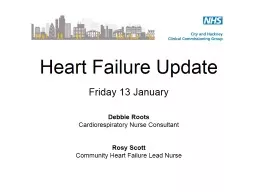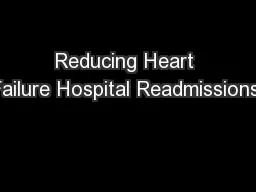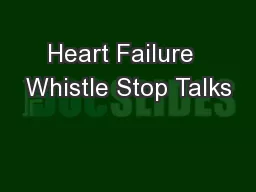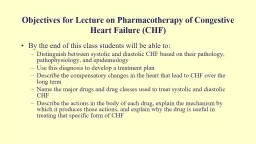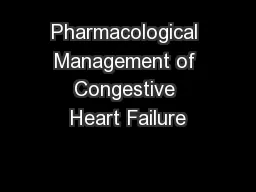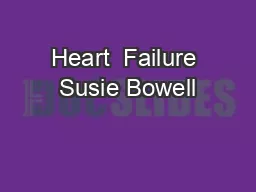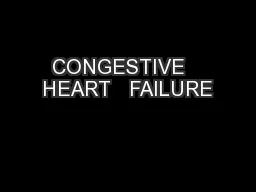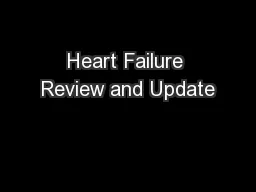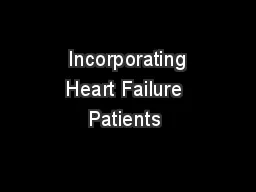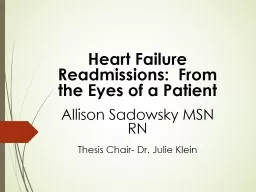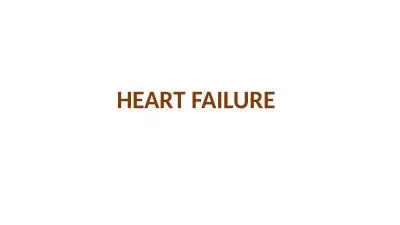PPT-Heart Failure Update Friday 13 January
Author : celsa-spraggs | Published Date : 2018-12-15
Debbie Roots Cardiorespiratory Nurse Consultant Rosy Scott Community Heart Failure Lead Nurse W ho are we and what can we do Debbie Roots Cardiorespiratory Nurse
Presentation Embed Code
Download Presentation
Download Presentation The PPT/PDF document "Heart Failure Update Friday 13 January" is the property of its rightful owner. Permission is granted to download and print the materials on this website for personal, non-commercial use only, and to display it on your personal computer provided you do not modify the materials and that you retain all copyright notices contained in the materials. By downloading content from our website, you accept the terms of this agreement.
Heart Failure Update Friday 13 January: Transcript
Download Rules Of Document
"Heart Failure Update Friday 13 January"The content belongs to its owner. You may download and print it for personal use, without modification, and keep all copyright notices. By downloading, you agree to these terms.
Related Documents

